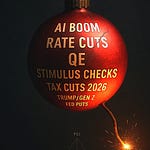The tension between centrality, on the one hand, and competition, on the other, is probably the oldest of all market structure issues.- Arthur Levitt
Centrality and competition are opposite political ideologies with regard to market structure.
They often interact at the political level in the form of debates and conflicts over government intervention in the economy.
Politicians and policymakers who support centrality may push for government control or ownership of key industries, increased regulation of markets, and the use of government policy to achieve social and economic goals. Those who support competition, on the other hand, may advocate for deregulation, privatizing state-owned industries, and cutting back on government spending.
In practice, the balance between centrality and competition can vary depending on the country, the economic conditions, and the political climate. Some countries, for example, may lean towards a more centralized economic system during times of crisis or economic downturn, while others may lean towards competition during times of growth. Additionally, different sectors of the economy may be subject to different levels of centrality or competition depending on their characteristics.
The tensions between these ideologies can often play out in political debates, especially when it comes to taxation, labor laws, trade policies, and government spending. These debates may happen among different political parties in a democratic country, or among different factions within a ruling party of a more autocratic government.
It's worth noting that the ideology of centrality and competition can change over time, as different perspectives and new evidence changes the perception of what works and what doesn't in the economy.
As go markets, so go governance
Speech by SEC Chairman:
Dynamic Markets, Timeless Principles
Remarks by
Chairman Arthur Levitt
U.S. Securities & Exchange Commission Columbia Law School, New York, N.Y.
September 23, 1999
We are at a unique moment in our markets' history – a point of passage between what they have been and what they will become. In the next few years, they will undergo a transformation like we have never witnessed before. And, it is these changes that will define the marketplace for the 21st century. We have an opportunity today that we may not have again in our lifetime – to realize the vision for a true national market system – one that embraces our future as much as it honors our past.
I'm here to address many of the developments born of technology and change affecting our markets. These issues are too numerous, and in many respects, too complex to allow for a complete discussion of them all tonight. But I want to raise some of the more urgent questions, and review the timeless principles that will guide us all as we move forward in the next stage of our markets' evolution. For no matter how much our markets change, markets of fairness, markets of integrity, and markets of quality should not be the most investors hope for – but the very least they should expect.
No less than the following issues demands our attention: the proposed demutualization of the national exchanges; the impact greater competition is having on order flow, liquidity, and execution costs; the imperative to interlink market centers; and more broadly, the challenge to provide investors with the efficiency of central markets without sacrificing innovation.
Each of these issues presents its own unique challenges and opportunities. But we can never forget that a market must evolve in response to the needs of its customers. For, at one time or another, all of us have failed to act outside the scope of parochial interests – refusing to recognize the market as a marketplace, and not an institution. This is not the time to cling to the comforts of custom; it is a time to demand value. We should be asking ourselves: what best serves the interests of investors? Anything that doesn't should be part of our history – not our future.
The Changing Features of Today's Marketplace
There is much we don't know about the marketplace of the century to come. Already, the roles and realities that have characterized our capital markets for over a century are being recast – from who investors are, to how they trade, to what an "exchange" is.
On-line trading has expanded the base of a powerful force in today's markets – the retail investor. Institutional trading has increased the demand for greater liquidity, anonymity, and even new trading venues. For on-line investors, brokers are conduits to markets; for institutions, they are prospectors for liquidity. Market participants are demanding more: twenty-four hour trading, immediate execution of orders, and lower costs.
Electronic trading networks are competing head-on with trading floors. The traditional market niches of specialists and market makers are being challenged as never before. The Nasdaq and the New York Stock Exchange seem determined to shed their traditional membership structure to compete with electronic networks and foreign markets. Every day, we are seeing new ideas, new trading mechanisms, and new investors.
Not surprisingly, major market players – not just exchanges – are rethinking their strategies. Investment banks and brokerage firms are taking significant equity positions in new electronic trading platforms. Many of these same players are implementing new proprietary algorithms to match investor profiles with "optimal trades." Hedging their bets, some are even pursuing ventures that stand to compete directly with their current businesses.
As the ground shifts, however, it has become increasingly evident that much of this change has benefited investors. Spreads have significantly tightened, execution costs have dropped, and investors are enjoying faster and faster execution. And with the impending conversion from fractions to decimals slated for next year, investors may gain even greater benefits.
Our Mission: Quality Markets
It is not the pace of technology or the brilliance of innovation, however, that guarantees the success of our markets, but rather an unyielding commitment to quality. Quality in the marketplace is faster, cheaper execution of transactions. Quality is efficient price discovery. Quality is the best execution of customer orders. Quality, at its broadest and most basic level, is the protection of the investor interest. This last principle, in particular, reaffirms a simple and salient truth -- markets exist by the grace of investors.
Above all else, the Commission has relied on competition to deliver quality in the marketplace. But the perennial question has been how can we further tap competition to augment market integrity and quality.
Twenty-five years ago, the marketplace consisted of a number of different exchanges and dealers – some large, some small. Each operated wholly separately, attracting what order flow it could. The difficult task of determining where the best price was across these many different markets fell on brokers. While this system served our nation well, it soon became clear that a national market system would never come to fruition. Transparency of quotes would never prevail. Healthy price competition would never become part of a normal business day.
So, in 1975, Congress called on the Commission to facilitate the creation of a national market system to connect these separate market centers. The motivation was clear – to develop a framework to foster greater competition. This framework included three central components. First, exchanges and dealers would publish both the prices at which they were willing to trade, and the prices at which stocks have traded. In a word, transparency. Second, linkages between exchanges would assist customers in obtaining the best prices available for their orders in any market, wherever first routed. And third, brokers would remain obligated to seek best execution of their customer orders.
The Commission believed then, as we do now, that our role is not to impose or dictate the ultimate structure of markets. Rather, it is to establish, monitor, and uphold the framework that gives competition the space and sustenance to flourish. Markets can then develop according to "their own genius" for the ultimate benefit of investors.
If barriers to competition did not exist, then neither would the need, in many respects, for regulatory involvement. But progress has sometimes been frustrated by narrow interests. Institutional interests, certain business practices, and even some past regulatory initiatives have created pockets of monopoly or externalities that thwart the evolution of our markets. And that's when it's been necessary to invoke pragmatic regulation. I'm convinced that striking a balance between strategic regulation and market forces has produced a better result than had either acted alone.
Consider what competition has unleashed. Once artificial obstacles such as fixed commissions were removed – an event known as May Day – and the groundwork for greater transparency laid, investors reaped benefits virtually overnight. Choices expanded. Commissions fell. Volume skyrocketed. Over the longer term, new competing market centers have taken hold. Executions are faster and their costs lower than ever before.
But two decades after May Day, new obstacles to competition came to light. An investigation of the OTC market revealed that quoted spreads were artificially wide and a two-tiered market had developed. Customer limit orders that would have narrowed spreads were hidden from view. In addition, market makers were trading within-the-spread in private trading venues not accessible to the general public.
In response, the Commission enacted rules to reinforce the framework for competition. Through the adoption of new Order Handling Rules, we insisted that customer limit orders in all markets be publicly exposed and two-tiered pricing eliminated. In the OTC market, a single public quote stream developed which, among other things, gave ECN quotes greater public exposure. Competition from ECNs energized the marketplace.
At the same time, the proliferation of ECNs highlighted the need for an approach to regulating different market centers that embodied both flexibility and accountability. The response, Regulation ATS – Alternative Trading Systems – extended basic market responsibilities – such as quote display, capacity, and fair access – to all market centers. It allowed exchanges to more freely innovate, and in doing so, responded to the competitive changes in the markets brought on by technology.
The Challenges Ahead
Electronic Communication Networks
Electronic communication networks have been one of the most important developments in our markets in years – perhaps decades. But exactly what are ECNs, and what are we to make of their impact on our markets? In simplest terms, ECNs bring buyers and sellers together for electronic execution of trades. They have provided investors with greater choices, and have driven execution costs down to a fraction of a penny. As a result, these networks present serious competitive challenges to the established market centers. More fundamentally, they illustrate the breath-taking pace of change that results when technology and competition coalesce.
The Commission's approach to ECNs has been two-fold: We have provided regulatory space for competition. At the same time, we have sought to ensure that the integrity of the marketplace is fiercely guarded and the playing field leveled for all markets.
To ensure their own integrity, ECNs, for example, must be prepared to confront the consequences of a market downturn. Their systems must be equipped to handle temporary as well as extended periods of extremely high order flow. The Commission examined the ECNs trading in Nasdaq securities to determine whether they are complying with the capacity requirements of Regulation ATS. Suffice to say, the Commission will not shy away from taking appropriate action when deficiencies are not corrected.
But it's important to note that electronic communications networks, like market makers and specialists, are not the ultimate source of market liquidity. It is the combined interest of investors – whether finalized through a computer network or a phone – that determines liquidity. ECNs should not be expected to stem a market break any more than market makers and specialists have in the past.
While it's clear ECNs are subject to today's invigorated competition, it is increasingly evident that the fees they charge to access their quotes are not. Brokers must try to get the best price for their customers – even when the best price is offered only by an ECN. Because brokers often have little choice but to pay whatever fee is charged by the ECN, competitive pressures on these fees have been all but paralyzed.
Nasdaq market makers, by contrast, may not charge fees to access their quotes. In this regard, ECN access fees stand alone in an otherwise fee-less arena. I believe this imbalance in the marketplace must be redressed. I have asked the Commission's staff to recommend the best approach towards restoring a fair, competitive balance in this important area.
Fees aside, ECNs have been dynamic contributors to the Nasdaq market. Now that some are registering as exchanges, we must insist that they be permitted to compete with the Nasdaq market and the established exchanges on fair and equal terms. The plans that tie together the markets trading in Nasdaq and listed securities – specifically quote reporting, trade reporting, and linkages – must accommodate new ECN exchanges.
In the listed market, traditional structures like the archaic Intermarket Trading System must not bar participation by ECNs that remain broker-dealers. If ITS is to remain the primary linkage between exchanges, it must no longer block innovation in its participants' markets and create inordinate delays for entry. It should not prevent, as it currently does, efficient electronic routing to other markets. ECNs simply must be able to compete with traditional exchanges and dealer markets in an environment free from unfair advantages or unreasonable barriers.
Demutualization
In the wake of this heightened competition from ECNs, Nasdaq and the NYSE are pushing forward with their plans to demutualize. The Commission has no intention, whatsoever, of standing in the way of a movement towards for-profit status. But, such developments do raise the question of how best to maintain our time-honored system of self-regulation. For the better part of this century, self-regulation has proved effective, in large part, because of its ground-level familiarity with the markets as well as its members' activities.
The potential for conflicts of interest that may arise if the SRO is enmeshed within a for-profit corporation must be defused. At the very least, I believe that strict corporate separation of the self-regulatory role from the marketplace it regulates is a minimum for the protection of investors in a for-profit structure.
Some have suggested one SRO that regulates all markets, alleviates conflicts and reduces redundancy, paperwork, and operational costs. Others line up behind a model where each market would maintain the regulatory and surveillance function solely for its own market – but member regulation, sales practices, and all other aspects of intermarket trading would be overseen by a single SRO.
While I certainly am not wedded to any particular model at this point – a great deal more thinking needs to be done – this latter approach is intriguing. Any restructuring, however, must ensure that the self-regulatory obligation be vigorously fulfilled, adequately funded, and dedicated to serving the public interest. I appeal especially to public directors to jealously guard the self-regulatory standards of the markets they oversee, particularly listing standards.
Our system of self regulation – tempered by years of battles fought, obstacles overcome and lessons learned – has created a degree of oversight that is not only unique, but a national asset. We simply cannot allow the mandate of self-regulation to take a back seat to the exigencies of short-term profit.
Options Markets
The same dynamic competition and sweeping reform unfolding in our equity markets is beginning to take place in the options markets as well. But in the name of more competitive, more connected, and more liquid options markets, we still have a ways to go.
For the first time in nearly 15 years, a new market entrant is applying to function as an options exchange. This development, among others, has fostered greater innovative and competitive practices by the existing markets. No less significant has been a dramatic increase in the number of options listed on multiple exchanges. Indeed, in the last month, more than 130 new multiple listings have been announced. And the effects already have been remarkable.
In four of the five actively traded options we examined, effective spreads have fallen between 22 and 44 percent since these options went from single exchange trading to multiple listings. This is good progress, but it's not enough. We must continue to move forward as quickly as quality and practicality can keep pace. The options markets must develop the fundamental standards reflected in our equity markets. I call on them tonight to promptly put in place linkages to encourage the best possible execution of customer orders. Additionally, market centers must act swiftly to address any short-comings in their capacity to handle options quote traffic. And more competition can – and must – be cultivated. I will insist upon progress on each of these fronts during the year ahead.
Promise and Peril of Centrality
Competition
Greater competition in all of our markets, however, has not arisen without debate. Depending on whom you talk to, the growth in new market entrants has induced "fragmentation." Others favorably characterize it as providing "heightened competition." In reality, neither description tells the whole story. We are living in a formative period in the next stage of our markets' development. It's not surprising that many forces will coexist – sometimes in lockstep, other times in conflict – some of whose influence will only be made clear in retrospect.
The fact is, multiple markets have existed since the earliest days of trading. And we have long believed that different market centers must be connected. Today, is there "fragmentation" in the sense that there are separate, isolated markets with reduced liquidity in normal trading hours? I think not. But is there "fragmentation" in terms of multiple pools of liquidity competing for orders based on transparent quotes and prices? Absolutely.
One point is crystal clear: there are more competitors for more customers' business, and greater open-market competition than ever before. Particularly in the OTC market, execution costs have never been lower and spreads have never been narrower – down an impressive thirty percent since the order handling rules went into effect.
So I can't think of a more propitious time to reconsider other restrictions that distort competition and introduce artificial costs. One, in particular, comes to mind – NYSE Rule 390.
This rule has long prohibited NYSE members from dealing in listed securities off an exchange. For years, proponents have argued that Rule 390 prevents fragmentation. Others contend that the rule is an anticompetitive use of market power by a dominant market. As I see it, Rule 390 may very well be on its ninth life. Now is the time to ask ourselves: is there a valid justification for a rule that appears to be more a barrier than a benefit? And how, under any circumstances, could such an anticompetitive rule be sustained should the NYSE become a for-profit corporation? While rulemaking is certainly an option, one way or another, Rule 390 should not be part of our future.
Linkages and Centrality
In zealously advocating competition, however, I don't dismiss the issue at the core of arguments against fragmentation – the intrinsic value of centrality. Central markets have always had an allure. Basic economics tells us that the greater supply and demand that congregate in one place, the more efficient the price-setting mechanism.
In terms of our markets, this means the more customer orders that interact with one another, the better the prices will be. Questions about best execution begin to fade. Spreads may narrow, liquidity may increase, and markets become more orderly.
Viewed another way, markets lacking a central order flow may discourage the use of limit orders by investors. In a fragmented market, a limit order displayed in one market center will ordinarily not be executed when a matching order is received in a different market center. The result may be fewer public limit orders and wider spreads. And, in a fragmented market with internalization, preferencing, and payment for order flow, dealers can trade customer orders against their own inventory, without routing them to the best quote. As a result, there is less incentive to quote a better price.
Today's order flow patterns seem to confirm that central markets are attractive trading venues. The NYSE's liquidity and narrow spreads, by no means, are lost on anyone.
But there is another side to centralization. As centrality tends towards monopoly, it also becomes more immune to innovation and the benefits of competition. Some even talk of our marketplace becoming an "execution utility." This image in particular gives me pause. We dare not allow any market structure to take hold that extinguishes the power of innovation.
In the past, the response to fragmentation concerns was linkages. As far back as 1975, the vision for a technologically-linked national market system was in place. But today, there is the potential for an even broader concept of "linked-markets" in light of technological advances and new possibilities.
Now, more than ever, is the time to revisit the historic conflict between competition and centrality. Tonight, I call upon the leaders of the securities markets – particularly the public representatives on exchange boards – to begin a public dialogue on whether technology offers ways to garner the benefits of centrality without stifling competition. The guiding principles are clear: price discovery and best execution should be enhanced; liquidity should be fostered; interaction between institutional and retail trading should be maintained; market innovation should be encouraged; and competition among market centers, above all else, should remain vigorous and dynamic.
Today's technology may afford us the opportunity to better achieve these goals – once thought to be mutually inconsistent. We should be searching for new approaches that use technology to strengthen the overall market.
For instance, should we consider pulling together electronically all limit orders and quotes displayed internally in the various markets – creating a "virtual limit order book," if you will. This approach may offer the advantage of exposing all markets' limit orders to the public, thereby allowing investors to better ascertain liquidity across the market. Should this be combined with an ability to access those orders electronically? To encourage quote competition, should dealers be expected to execute quotes previously displayed in the virtual book before trading at that price with customer orders themselves? And to promote innovation in individual markets, should markets still be able to cross their agency orders internally at the best price, regardless of other orders at that price on the book?
These are controversial questions, without easy answers. Decimal pricing may complicate them further. But these are the types of questions that many in the industry already are independently considering. This moment in history demands thoughtful, constructive, and far-reaching thinking. Neither our markets nor our investors can afford today's opportunity for change to be dominated by parochialism. The public spirit must reign.
The Future of Our Markets
I've spent much of my professional career in the securities industry. And there are traditions – indeed icons – in our markets for which I have particular nostalgia. But I also believe that our own sentiments must not be allowed to stunt our progress or frighten us into complacency. Our markets are a national treasure that should never be taken for granted or squandered by short-sighted thinking.
To the market centers, I say let's be ruthless in our examination of every aspect of the work we do and in the way we allocate resources. If, as I suppose, technology will distinguish world class markets of the future from aging relics of the past, let us devote every bit of capital available – intellectual or otherwise – to building the marketplace of tomorrow. The choice between a self-serving advertising expenditure or an investment in technology is a clear one. An economy spurred by innovation and fueled by the competitive spirit deserves no less.
I've raised many issues today and recognize that it's easy to get lost in the details that envelop them. But we should never lose sight of the underlying essence of a market – a place where buyers and sellers come together. Every other feature of the marketplace – whether crafted by tradition or technology – exists only to serve that primary purpose.
While the landscape of tomorrow's markets may not resemble today's, the fundamentals – quality, trust, accountability – remain timeless. Mountains may rise, rivers may change course, new roads may be created. But unless the laws of nature betray us, true north will always remain true north.
Let us not look back at this time as an opportunity not seized, an endeavor not realized, a challenge not taken, or a frontier not explored. We should not indiscriminately jettison the features of yesterday any more than we should allow entrenched interests to stonewall new market entrants and technologies that offer us superior efficiencies. Only by embracing change, renouncing obstructive impediments, and harnessing innovation and competition will we guarantee to our investors, our economy, and our nation the world's most successful capital markets.
Thank you very much.
http://www.sec.gov/news/speech/speecharchive/1999/spch295.htm











